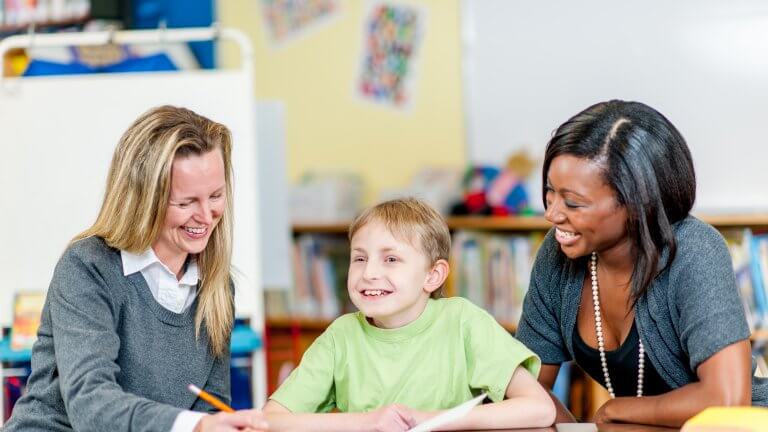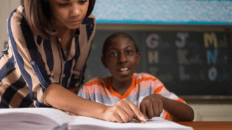The Present Levels of Academic Achievement and Functional Performance statement ( called the PLAAFP or “present levels”) is a key part of your child’s Individualized Education Program (IEP). PLAAFPs describe what your child can do now or at what level your child is performing in a particular area and should cover all areas of development where your child may need support.
Some examples are:
- Academic skills – counting, pre-reading, pre-writing
- Daily living or self-help skills – dressing, eating, using the bathroom
- Social skills, playing with friends
- Behavior
- Sensory skills – hearing, seeing
- Communication skills – talking, listening
- Mobility – getting around in school and the community
What is the Purpose of the PLAAFP?
The purpose of the PLAAFP is to identify the kinds and amount of services your child may need to receive. So the PLAAFP statement includes information about how your child’s disability affects their involvement in the general education curriculum. If your child is preschool age, their PLAAFP will focus on how their disability affects their involvement in typical preschool activities and development. In other words, you and the rest of the team will talk about the impact your child’s disability has on their ability to learn and do the kinds of things that children without disabilities learn and do.
A well-written PLAAFP statement will describe:
- Your child’s strengths and weaknesses
- What helps your child learn
- What limits or interferes with your child’s learning
- Objective data from current evaluations of your child
- How your child’s disability affects his or her ability to be involved and progress in the general education curriculum
What’s inside a PLAAFP?
Current Information From a Variety of Sources.
The ARD committee will review recent evaluation information available on your child, such as the previous year’s STAAR test, other assessments, and classroom achievement.
If your child is new to special education, this information will come from the tests and observations done during your child’s evaluation for eligibility. If your child’s IEP is being reviewed and revised, the information may come from evaluations done during the year.
Teachers and others who work with your child may offer information they’ve learned by observing your child’s day-to-day school routine. You as a parent can and should provide information that can help shape his PLAAFP.
Spotlights The Area(s) of Need
Academic Achievement (PLAAFP) focuses on what specific kinds of academic information and skills your child has mastered – such as reading at a certain grade level, or performing certain mathematical calculations for example.
Functional Performance (PLAAFP) refers to other areas of achievement that are not academic. It can include information about your child’s social skills, communication skills, and other activities of daily living (ADL).
Describes the Student’s Current Performance in Measurable Terms
It is important that the PLAAFP statements be based on objective data, teacher observations can be an important part of the data . The PLAAFP statements should include information about the impact of your child’s disability on how much he/she is accessing and progressing in the general education curriculum (TEKS).
Provides Baseline Data to Measure Progress and Starting Place for Instruction
The PLAAFP is the basis on which the ARD committee will write goals for your child’s educational year. It gives the ARD committee a starting place.
Focused Instructional Support
- There should be a direct relationship between evaluation/assessment information and PLAAFP statements.
- Choose areas that are most critical to meet the child’s needs, enabling the child to achieve expected skills/concepts.
- Choose functional skills that are essential to supporting success in the general education environment.
Cole Bubenik is a Content Marketing Specialist here at Region 13.





Honestly speaking, every classroom educator be it virtually or face-to-face, should be exposed to some form of special education training. The classroom has changed and continues to change. Every family need this exposure also. there is so much that families can do to impact success in education. This 21st century global community is demanding a lot through education.